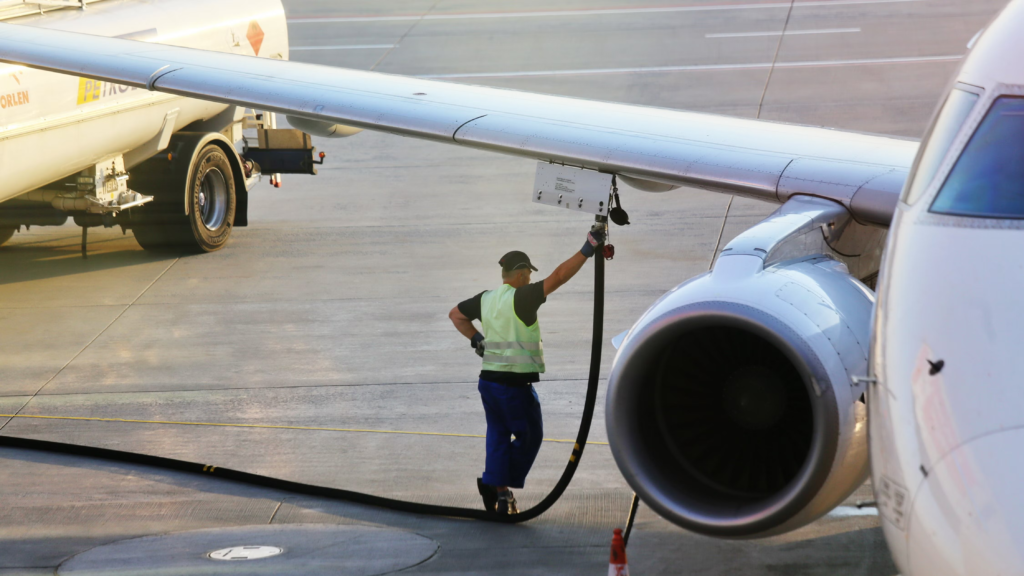Global demand for aviation turbine fuel (ATF) or jet fuel is likely to ease as the slowdown in consumer spending impacts people’s travel budgets. A shift in pattern can affect oil prices in the coming months, news agency Reuters reported on Wednesday, August 14.

The oil demand globally has struggled to meet expectations in the first half of the year due to weaker consumption data from the United States and China, the two primary markets for oil.
Jet fuel contributes 7 per cent of global oil demand, which was expected to be the driving factor for demand growth this year as travel continues to rebound from the COVID-19 pandemic.

Global jet fuel demand rose by 500,000 barrels per day (bpd) in July 2024 compared to the previous year to nearly 7.49 million bpd, data collected from Goldman Sachs showed, according to the report.
Oil demand must rise faster in the coming months to meet Goldman’s growth forecast of 600,000 bpd for the current year. The report says the signs of a slowdown are predicting a low probability of the estimates.
US airline operators and travel companies have expressed concerns over a consumer spending slowdown as disposable income is contracting. This is likely to affect leisure travel.

US consumers’ average spending grew 0.3 per cent in the last three months through June, the slowest increase in more than a year.
“We see limited scope for further gains for (US) jet fuel, traditionally the most macro-driven product category, as a cooling economy weighs on demand for air travel,” the report quoted the International Energy Agency (IEA) as saying.
The weaker economic activity can worsen a slowdown in global trade, cutting air freight demand, a Bank of America analyst told Reuters. The analyst further noted that global trade has been experiencing a slowdown in the last few years as demand in the US and Europe has transitioned from goods to services.

The Organization of the Petroleum Exporting Countries (OPEC) reduced its oil demand forecast for the first time since July 2023. At the same time, the IEA cut its 2025 estimates, citing weaker-than-expected economic growth in China and elsewhere as one reason for the reduction.
Microsoft’s Crowdstrike outage grounded multiple airlines for a few days in July, which has also affected jet fuel demand. The US’ jet fuel consumption dropped by 10,000 bpd year-on-year in July, according to the IEA.

“In sum, macro conditions for transportation fuels are deteriorating pretty quickly,” Bank of America analysts said, adding that “with this background in mind, we believe that the broader demand trends for jet fuel remain soft”.
Long-term effects of the fall in demand:
A shift in consumer behaviour and improving technology in aviation are also likely to affect consumption.

The improving efficiency and mileage in the newly made aircraft are built in a way to carry more passengers around longer distances which will burn less fuel, said Wei Ran Gan, analyst at Rystad, told the news agency.
The fuel economy from US aircraft operators rose to 65.5 seat miles per gallon in 2023, compared to 64.9 seat miles per gallon in 2019, as per the report. This is a metric used to measure airline capacity.
After the pandemic a shift in consumer preference for shorter flights as compared to international travel has hurt demand, the Bank of America analyst cited above said.

The trade wars between the US and China have reduced air traffic between the countries to one-fourth of its five-year-ago levels, the Goldman Sachs analyst said.
Travel from Russia has dropped 40 per cent compared to the 2019 levels and borders have been closed for Russian passengers ever since the country’s attack on Ukraine, as per the report.

The two routes would have contributed 80,000 bpd to the jet fuel demand.
Analysts quoted in the report expect jet fuel demand to keep growing, but they warned about a slowdown due to issues and technological improvements, which puts risk in the oil demand and price forecast for the year.


